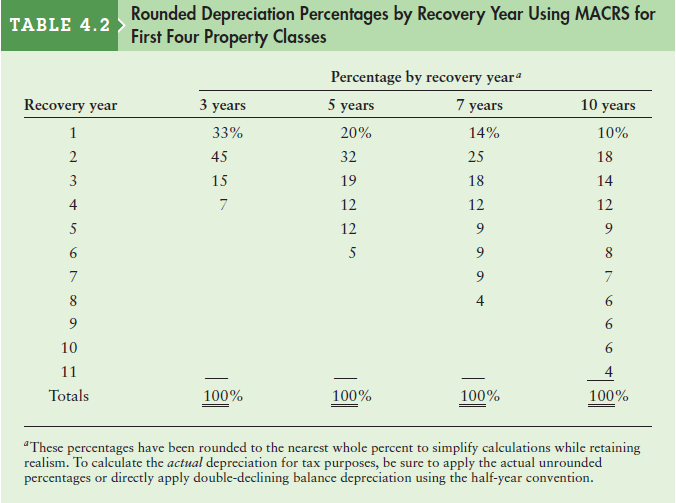Northwest Lumber Company needs to expand its facilities. To do so, the firm must acquire a machine
Question:
Northwest Lumber Company needs to expand its facilities. To do so, the firm must acquire a machine costing $80,000. The machine can be leased or purchased. The firm is in the 40% tax bracket, and its after-tax cost of debt is 9%. The terms of the lease and purchase plans are as follows:
Lease The leasing arrangement requires end-of-year payments of $19,800 over 5 years. All maintenance costs will be paid by the lessor; insurance and other costs will be borne by the lessee. The lessee will exercise its option to purchase the asset for $24,000 at termination of the lease.
Purchase If the firm purchases the machine, its cost of $80,000 will be financed with a 5-year, 14% loan requiring equal end-of-year payments of $23,302. The machine will be depreciated under MACRS using a 5-year recovery period. (See Table 4.2 for the applicable depreciation percentages.) The firm will pay $2,000 per year for a service contract that covers all maintenance costs; insurance and other costs will be borne by the firm. The firm plans to keep the equipment and use it beyond its 5-year recovery period.
a. Determine the after-tax cash outflows of Northwest Lumber under each alternative.
b. Find the present value of each after-tax cash outflow stream, using the after-tax cost of debt.
c. Which alternative—lease or purchase—would you recommend? Why?
Table 4.2

The cost of debt is the effective interest rate a company pays on its debts. It’s the cost of debt, such as bonds and loans, among others. The cost of debt often refers to before-tax cost of debt, which is the company's cost of debt before taking...
Step by Step Answer:

Principles Of Managerial Finance
ISBN: 978-0136119463
13th Edition
Authors: Lawrence J. Gitman, Chad J. Zutter





